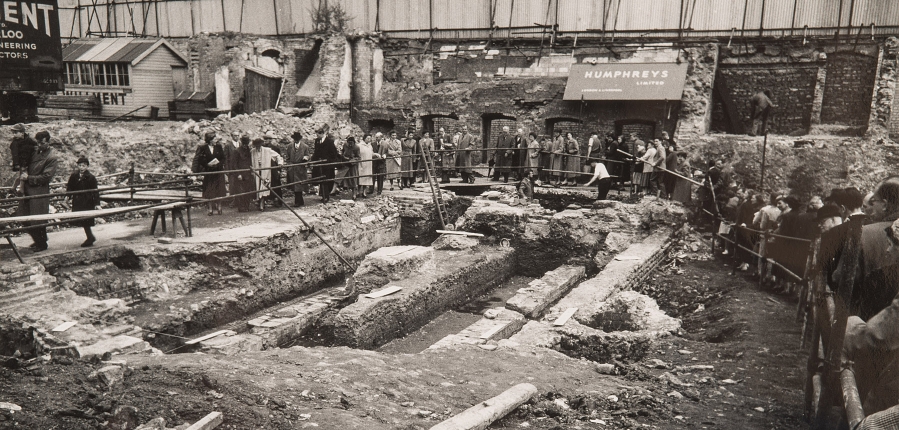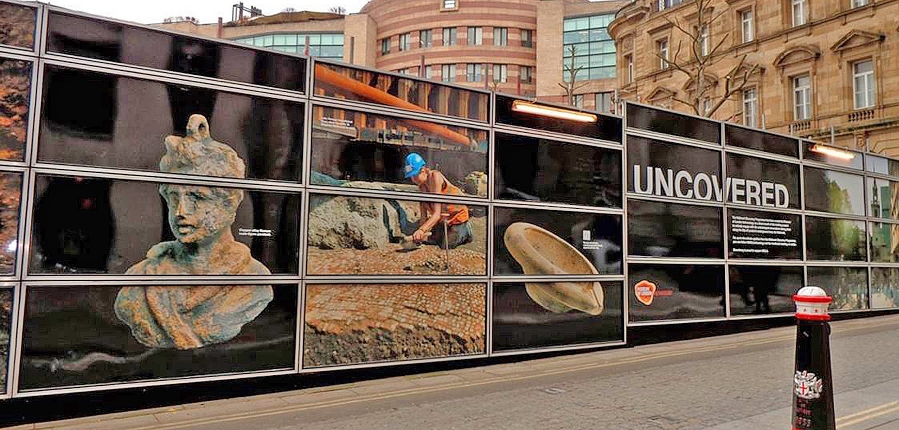Last week we had the absolute pleasure of welcoming Taryn Nixon to speak at our departmental seminar. Taryn is the CEO of Museum of London Archaeology (MOLA), who operate commercially through development-led archaeology. Her talk concerned some of the major work MOLA have been doing in London, how it links with various research agenda and how it might be similar or different from the roles academics play at universities. Alongside their commitments to developers, Taryn was keen to emphasise the role MOLA play in establishing links with the heritage of a place and the local community.
As part of this she presented “3 Days in the Life” of a particular case study: the Bloomberg Place project in Walbrook, Central London. This site was first excavated in 1954 during the post-war development of London when a Roman temple was discovered: London Mithraeum. This temple was dedicated to a mysterious Roman cult from Persia celebrating Mithras and instantly caught national attention with over 400,000 people lining the streets to visit the excavation. At the time only a single archaeologist worked on site alongside the construction workers.

Temple excavation 1954
Fast forward to 2014 and the development of Bloomberg Place. Next to the Mithraeum, MOLA discovered an extensive Late Roman complex, incredibly preserved by waterlogged conditions. MOLA invested 80,000 hours of excavation into revealing wooden palisade corridors, walls and floors, and recovering 55,000 sherds of Roman pottery, 2 tonnes of animals bones (mostly cattle), and lots of martial and cavalry equipment (e.g. shoes, spearheads, pendants, mounts and harnesses). This incredible site holds some amazing insights into daily Roman life and the establishment of settlement in Londinium.
Taryn then presented the post-excavation activities from 2015 and MOLA’s process for achieving research aims. MOLA’s programme of Research, Education and Sustainability is key to their post-excavation work, with numerous visits and talks given at both school and academic levels. Taryn especially emphasised the Research Agenda MOLA had in place that was independent of the contracted work they do and their aims for the future. This involves their various outputs and how they might engage with the wider research community. The role of MOLA in the academic sphere became a focus point for the subsequent discussion, with “randomised” development archaeology highlighted as crucial for helping archaeologists and academics engage with a fuller picture of our landscape.
Overall, Taryn gave us a thought-provoking insight into the commercial sphere, which built upon much of what Neil Holbrook had shown us a couple of weeks ago. For anyone interested in finding out more about the project or MOLA in general, please visit: http://www.mola.org.uk/ for research updates and blog posts. Taryn and MOLA can also be followed on Twitter @TarynNixon and @MOLArchaeology.

